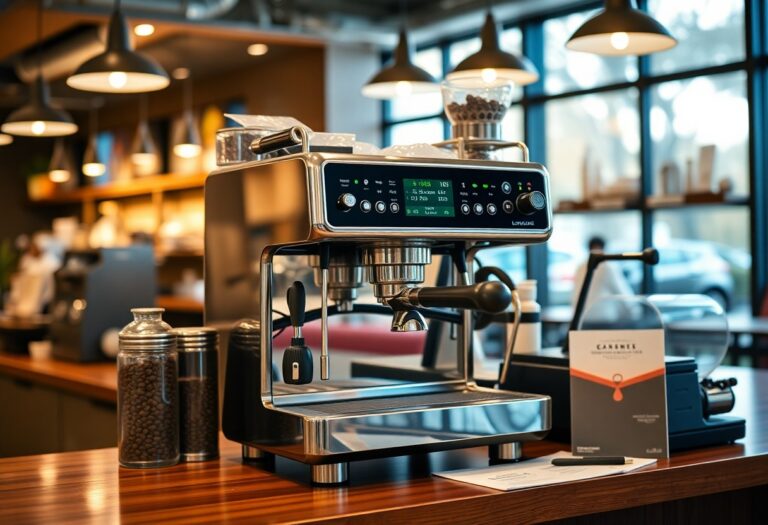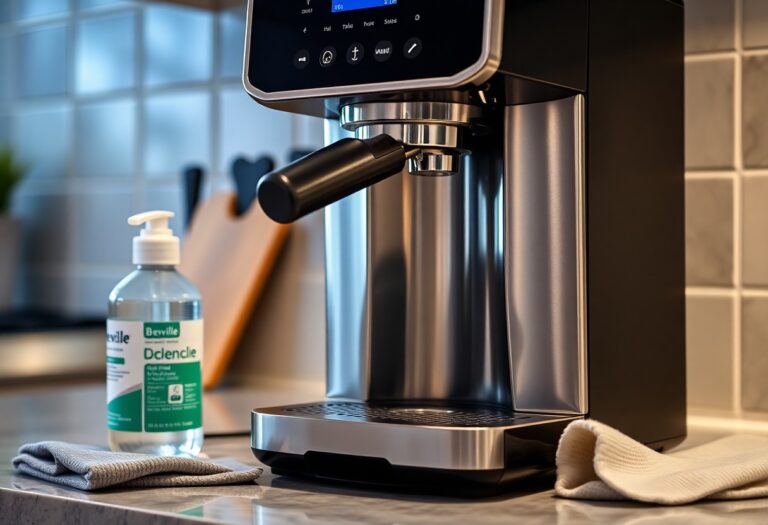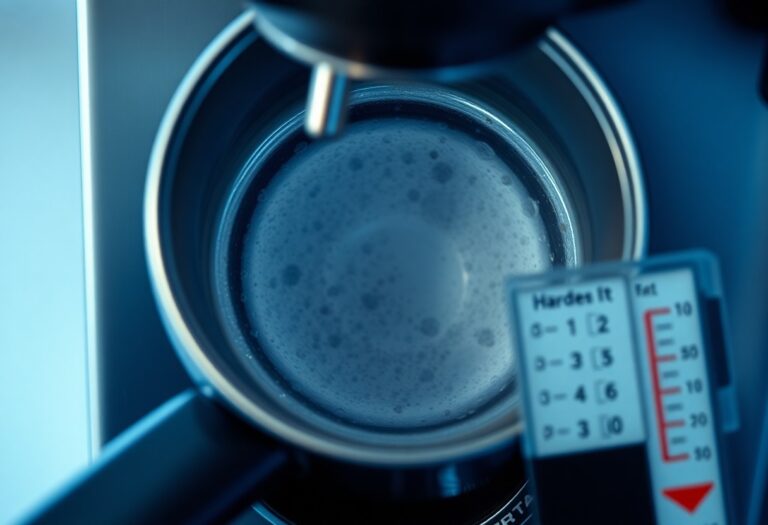How to Make Cold Coffee at Home Without a Machine
You can easily enjoy a refreshing cup of cold coffee at home without needing any fancy equipment. With just a few simple ingredients and techniques, you can create a delicious cold brew that will satisfy your caffeine cravings. This method not only saves you money, but it also allows you to customize your drink to your personal taste. Follow these easy steps to brew your perfect cold coffee and elevate your morning routine or afternoon pick-me-up with flavorful notes and icy perfection!
Key Takeaways:
- Choose your coffee: Use coarsely ground coffee beans for a smoother flavor, preferably a dark roast for a richer taste.
- Cold brew method: Combine coffee grounds with cold water in a jar or pitcher, letting it steep in the refrigerator for 12 to 24 hours.
- Strain the coffee: After steeping, use a fine mesh strainer or coffee filter to separate the coffee concentrate from the grounds.
- Customize your drink: Add milk, cream, sugar, or flavored syrups according to your preference for a personalized cold coffee experience.
- Serve over ice: Pour the cold coffee mixture over ice for a refreshing beverage, and enjoy it as a perfect pick-me-up!
Choosing Your Coffee Beans Wisely
Your choice of coffee beans lays the foundation for a delicious cold brew. Look for freshly roasted beans for the best flavor, focusing on specialty coffees available at local roasters or reputable online retailers. Experimentation is key; various origins will present unique taste notes. Try single-origin coffees to appreciate how the location affects flavor, as the soil and climate play significant roles in the beans’ characteristics.
The Impact of Bean Origin
Roast Levels and Their Flavor Profiles
Roast levels significantly influence the taste and aroma of your coffee. Lightly roasted beans typically exhibit brighter, more acidic flavors, highlighting the beans’ origin. Medium roasts strike a balance between acidity and a fuller body, often featuring caramel-like sweetness. Dark roasted beans, on the other hand, can present bold, smoky, and even bitter notes, ideal for those who enjoy a robust cup of cold coffee.
The roast level can transform your coffee experience. For example, a *light roast* from Kenya might introduce flavors of berry and citrus, making it refreshing when iced. On the other hand, a *dark roast* from Colombia could result in a heavy, chocolatey cold brew that stands up beautifully when blended with cream or sugar. Taste-testing various roast levels can help you pinpoint your perfect match for cold coffee, ensuring each cup is just the way you like it.
Essential Tools: What You Need at Home
To make cold coffee at home, gather a few imperative tools. You’ll need a container for brewing, such as a jar or pitcher, along with a stirring utensil. A fine mesh strainer or cheesecloth will help separate the coffee grounds after brewing. Additionally, have ice cubes and your favorite milk or cream on hand to enjoy your beverage to the fullest. If you love flavoring your cold coffee, keep syrup or flavored extracts nearby as well.
Common Kitchen Items That Double as Coffee Makers
Many everyday kitchen items can serve as makeshift coffee makers. For instance, a simple jar with a lid can be used for a coffee steeping method. You can also utilize a French press if you have one, or even a fine mesh sieve. In a pinch, you might use a teapot or a saucepan to boil water and mix in your coffee grounds.
Alternative Brewing Techniques
Exploring alternative brewing techniques opens up a world of creativity for your cold coffee preparation. You might try the cold brew method, where coffee grounds steep in cold water for several hours to extract smooth flavors without acidity. Another approach is the ice cube method, where brewed coffee is frozen into cubes, allowing for a rapid chill without dilution when added to your drink. You can also experiment with blending coffee with ice and milk for a frosty, frappuccino-like beverage.
Using the cold brew method, for instance, allows you to mix coarsely ground coffee with cold water in a 1:4 ratio. After steeping for 12 to 24 hours, simply strain the mixture and keep the concentrate in your fridge. Combine it with milk or water, add ice, and you’ll have a delightfully smooth and refreshing cold coffee. This technique enhances the natural sweetness of the coffee, resulting in a less bitter drink compared to traditional brewing methods. If you’re looking for a quick alternative, blending brewed coffee with ice creates a refreshing coffee shake, perfect for warm days.

Mastering the Art of Cold Brew
Creating a smooth and rich cold brew requires patience and precision. The cold brewing method extracts flavors from coffee grounds without the acidity that hot brewing can impart. The result is a delightful, low-acid coffee that can be enjoyed on its own or used as a base for various coffee drinks. Perfecting this technique will have you savoring café-quality cold brew right from the comfort of your home.
Step-by-Step Cold Brew Process
| Step | Description |
| 1. Measure Coffee | Use a 1:4 coffee-to-water ratio for a strong brew. For example, 1 cup of coarsely ground coffee to 4 cups of cold water. |
| 2. Combine | In a jar or pitcher, mix the coffee grounds with cold water thoroughly. |
| 3. Steep | Let the mixture steep for 12-24 hours at room temperature or in the fridge. |
| 4. Strain | Use a fine mesh strainer or coffee filter to separate the grounds from the liquid. |
| 5. Serve | Pour over ice and dilute with water or milk as preferred. |
Infusing Flavors: Creative Additions
Take your cold brew to the next level by infusing it with exciting flavors. Experiment with different ingredients like vanilla extract, cocoa powder, or flavored syrups to enhance your cold brew experience. You can also add spices like cinnamon or nutmeg for a warm undertone or incorporate flavored creamers for richness.
Infusing your cold brew opens up a world of flavor possibilities. Add a splash of almond milk for a nutty twist or a dollop of whipped cream combined with caramel syrup for a sweet treat. For a refreshing choice, toss in mint leaves or a hint of coconut cream. Each option allows you to personalize your beverage, showcasing your unique taste preferences. The versatility of cold brew makes it an ideal canvas for experimenting with flavors, ensuring each cup can be uniquely yours.

Crafting the Perfect Iced Coffee
Crafting the perfect iced coffee is all about balancing temperature, flavor, and presentation. Whether you prefer a smooth cold brew or a refreshing iced latte, the method you choose will affect the overall taste and experience. Focus on using quality ingredients, and take the time to brew your coffee properly before chilling it to ensure a delightful and revitalizing beverage that you can enjoy any time of the day.
Hot Brew to Cold: Quick Methods
If you lack time for a lengthy cold brew process, hot-brewed coffee can quickly become iced coffee with a few simple techniques. Brew your coffee at double strength—using twice the coffee grounds and half the water—for a more refined flavor when chilled. Pour the hot coffee over a glass filled with ice, allowing the ice to cool it instantly. Just keep in mind that the melting ice will dilute the coffee, so opt for ice cubes made from coffee instead to avoid losing flavor.
Flavor Enhancements for a Unique Twist
Elevate your iced coffee experience with unique flavor enhancements that cater to your taste preferences. Try adding spices like cinnamon or nutmeg, sweeteners such as vanilla syrup or caramel, or even a splash of your favorite milk alternatives like almond or oat milk for added richness. Infusing your cold coffee with flavored syrups or espresso shots can open up an entirely new world of aromatic possibilities.
To dive deeper, consider experimenting with flavors that complement your palate. A touch of chocolate syrup can create a mocha iced coffee, while flavored extracts like hazelnut or almond can provide delightful notes. Explore variations by incorporating seasonal ingredients such as peppermint during the holidays or coconut syrup in summer for a tropical flair. The key is to be creative—adding a few drops of flavored syrup can transform your basic iced coffee into an indulgent treat that excites your taste buds every time you sip.
Troubleshooting Common Cold Coffee Issues
Even with the best intentions and techniques, cold coffee can sometimes come out less than perfect. Tackling weak or bitter brews can save your experience and help you achieve that perfect cup. Additionally, focusing on proper storage solutions ensures your brewed coffee stays fresh and enjoyable for longer.
Overcoming Weak or Bitter Brews
If your cold coffee ends up weak, increase the coffee-to-water ratio next time. A common guideline is to use a 1:4 ratio of coffee grounds to water for a strong extract. To combat bitterness, ensure you’re using quality beans and avoid over-extraction; steeping the grounds too long can lead to a harsh flavor.
Storage Solutions to Preserve Freshness
To keep your cold coffee tasting fresh, store it in an airtight container in the refrigerator. Avoid prolonged exposure to air, which can degrade flavor. Use glass jars or vacuum-sealed containers for optimal preservation, and consume within a week for the best taste.
Maintaining freshness also depends on the method of brewing. For example, cold brew is best stored in the refrigerator, where it can last up to two weeks without losing its flavor, while brewed iced coffee should be consumed within a few days. If you’re storing coffee for longer periods, consider freezing leftover brews in ice cube trays. This not only preserves flavor but also allows you to easily chill future drinks without diluting them.
Final Words
Summing up, making cold coffee at home without a machine is a simple and rewarding process that allows you to enjoy a refreshing beverage tailored to your taste. By following the steps outlined, you can create a delicious drink using basic ingredients and common household items. If you’re seeking further tips, consider exploring the Best Way to Make Iced Coffee at Home for additional inspiration. Enjoy your homemade cold coffee and savor each sip!
FAQ
Q: What ingredients do I need to make cold coffee at home without a machine?
A: To make cold coffee at home, you will need the following ingredients:
– Instant coffee or brewed coffee (cooled)
– Milk (dairy or non-dairy alternatives)
– Sugar or sweetener (to taste)
– Ice cubes
– Optional: flavorings like vanilla extract, cocoa powder, or whipped cream for topping.
Q: Can I use regular coffee instead of instant coffee?
A: Yes, you can use brewed coffee instead of instant coffee. Brew a strong cup and let it cool down to room temperature or refrigerate it. Once it’s chilled, you can mix it with other ingredients as you would with instant coffee to create your cold coffee.
Q: How can I achieve a frothy texture for my cold coffee without a machine?
A: To create a frothy texture without a machine, you can use a jar with a tight lid. Combine your coffee, milk, and sweetener in the jar, close it tightly, and shake vigorously for about 30 seconds. This will introduce air into the mixture and create froth. Pour it over ice for a refreshing cold coffee experience.
Q: What are some variations I can try when making cold coffee at home?
A: There are many variations to explore! You can make an iced mocha by adding chocolate syrup, or a caramel cold coffee by mixing in caramel sauce. For a healthier option, try adding blended banana or other fruits. You can also experiment with different types of milk (like almond, oat, or soy) to suit your taste preferences.
Q: How long can I store cold coffee in the refrigerator?
A: Cold coffee can be stored in the refrigerator for up to 3 days. However, it’s best to consume it within the first 24 hours for the freshest taste. Always stir or shake well before drinking if it has been sitting for a while, as the ingredients may separate over time.







